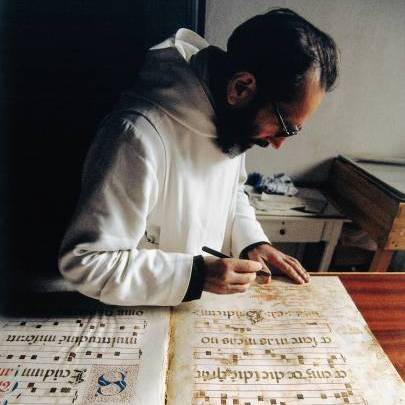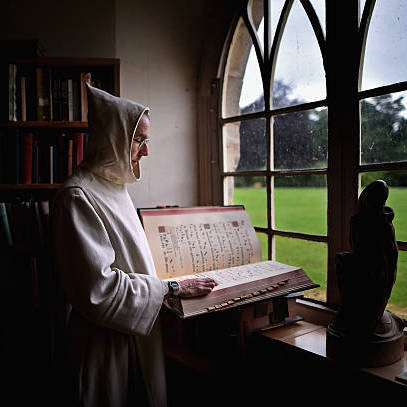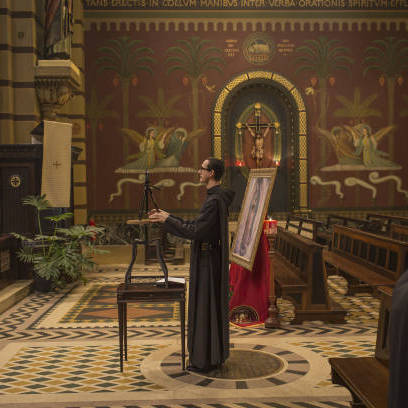Gregorian Chant
|
The origins of Gregorian chant are thought to lie in early Jewish and Greek music. It is known as "Gregorian" because of its association with Pope Gregory (c. 560-640), who helped to promote Latin chant within the liturgy and spread the Christian faith across Europe. A simple unaccompanied line of Latin text from the scriptures sung in non-metrical rhythm: this is the essence of plainsong. The repertoire expanded during the early Middle Ages in particular, with texts transcribed using various notations. To quote St. Augustine, who is thought to have brought plainchant to this country: "cantare amantis est" - loosely translated, "to sing is to love". Chant became integral to the Medieval monastic life, and anyone who has spent time in a monastery will understand its power to transcend the earthly and connect us with the Divine.
The advent of polyphony - complex and metrical, the antithesis of plainchant - around the time of the Renaissance and Reformation led to a decline in the use of plainchant. Nevertheless, plainsong provided the basis for Anglican chant, developed in the 17th century, in which a harmonised melody is used to sing unmetrical texts. Interest in Medieval plainchant was revived in the early 19th century, notably by Dom Prosper Guéranger at the French abbey of Solesmes, who researched and restored Gregorian chant from ancient manuscripts, a project that continues today. Gregorian chant has also enjoyed broader popularity more recently for its musical simplicity and beauty. Because of its Benedictine history, St. Wulstan's church has traditionally incorporated plainchant into its liturgy. This seems particularly apposite given that it was Dom Guéranger himself who celebrated the first mass at Belmont Abbey, which lends one of its monks to St. Wulstan's as our parish priest. Plainchant at St. Wulstan's includes singing the Latin Kyriale, or Ordinary of the Mass (Kyrie, Gloria, Credo, Sanctus and Agnus Dei) on some Sundays, during which cantors alternate with the congregation, as well as Marian antiphons (hymns to the Virgin Mary) at the end of Mass and particular Latin chants for certain feast days. The chants can be sung a cappella or with gentle organ underlay. At St. Wulstan's we may include Latin plainchant at certain points in the Mass, but most of the Mass is of course in English. |



